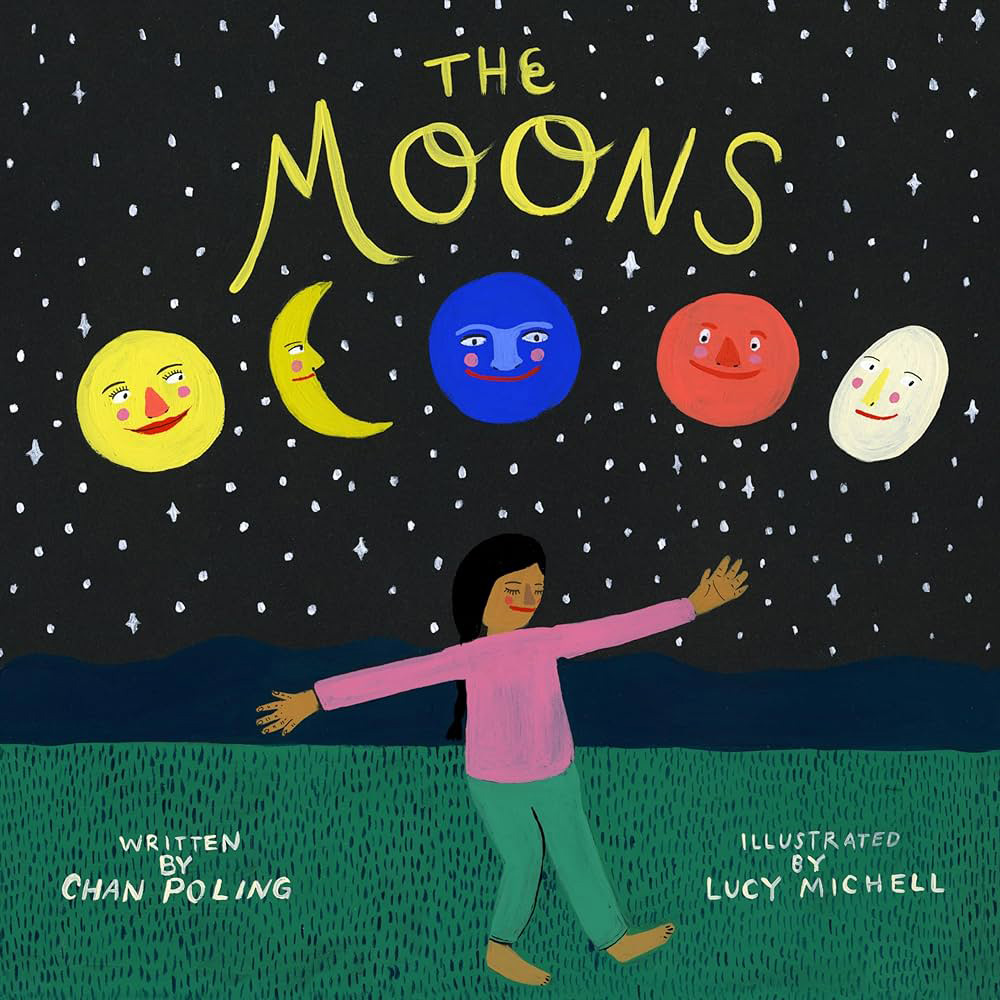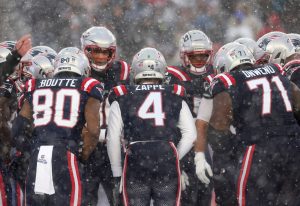
Readers and writers: Spring bedtime books for kids
From children who lived in refugee camps to a little girl who loves moons, a goat who eats everything and grain-stealing mice, here are spring bedtime books for the little ones.
(Courtesy of the author)
“Caged”: by Kao Kalia Yang, illustrated by Khou Vue (Penquin Young Readers, $18.99)
Kao Kalia Yang (Courtesy of Lerner Publications)
How does this prolific St. Paul author give us so many thought-provoking books? She writes for adults (“The Song Poet,” “The Late Homecomer,” “Where Rivers Part”) and stories for children, including “Caged,” inspired by her eight years in a refugee camp in Thailand after her family fled Laos to escape communist rule.
Like her previous children’s books (“From the Tops of the Trees,” “Yang Warriors” and others), Yang brings to life in “Caged” the longings of children, many born in the camp, for freedom. They try to imagine the outside world as their friends board buses to take them to new lives.
“I live in a cage but I don’t know it” is the first sentence, illustrated by a little girl picking flowers through a barbed-wire fence. The girl spends her days playing with her cousins, watching the men with guns patrol the camp’s borders, imagining a place where children “drink from/waterfalls, carry dolls in our arms, and/ ride around in bicycles fast as cars!…” In the camp families wait in line for the same food they eat every day — rice with dried fish. The kids listen to the elders talk about war, which the girl tries to imagine: “When I see the hungry dogs fight/over a fallen fish bone, I think/I know what war feels like.” At the end, the girl’s mother tells her the family’s papers have been approved and they will soon leave the camp. The girl is hugged by her favorite aunt, who says, “Your wings/have arrived”
Yang explains in an author’s note that she was 6 when her family left the Ban Vinai Refugee Camp for resettlement in the United States. One day she was reading about the 180,000 minors detained at the U.S.-Mexico border when her 6-year-old daughter asked if those kids were in cages too. “This is my answer to Shengyeng’s question,” Yang writes. “It is my answer to all the children who see others in cages, who are born within them, who dream of worlds where the fabric of a shirt can turn into wings, where we can soar high above the circumstances of our lives.”
Yang, winner of four Minnesota Book Awards, has been recognized by the National Endowment for the Arts, the National Book Critics Circle Award, the PEN/USA literary awards, the Dayton’s Literary Peace Prize, the American Library Association, Kirkus best books of the year and the Heartland Bookseller’s Award. Khou Vue, whose illustrations of kids with big smiles enliven the text, is a first-generation Hmong-American graphic designer and illustrator
Although the publisher of “Caged” recommends it for ages 4-8, it has more text than most children’s books and the youngest kids will need explanations from adults. It is a contemporary book in its exploration of how children cope with what war does to them, as though Yang is looking into their hearts as she writes from her own experiences.
(Courtesy of FuzionPress)
“The Mice and Grain: A Hmong Folktale from China”: by Tou Pao Lor, illustrated by Tou Her (FuzionPress, $19.95)
This author’s life story is much like Kao Kalia Yang’s. He was born in Laos and lived in three refugee camps in Thailand for 16 years because his father kept hoping they could return to their homeland. After Lor made his way to the United States he graduated from Metropolitan State University in St. Paul and won a scholarship to study in China. That’s where he learned about the Miao (Hmong) history in that country. When he asked an elder to tell a story from Miao folklore, he chose “The Mice and Grain.”
In the story, a mouse braves a violent rainstorm to save precious seeds. After the storm the villagers lament that water washed everything away and they have no seeds to plant. The mouse shares his seeds, asking only that each year the people save one stalk of grain for the mouse family. But the elders died without telling their children about the promise and nobody gave the mice grain. Since the villagers went back on their promise, the mice decided to steal the people’s grain and that is what they have been doing for thousands of years.
Illustrator Tou Her, a graduate of the Milwaukee Institute of Art & Design, is founder of Studio Tou (touher.com).
(Courtesy of the Minnesota Historical Society Press)
Chan Poling (Courtesy of the author)
“The Moons”: story by Chan Poling, illustrations by Lucy Michell (Minnesota Historical Society Press, $17.95)
This story of Lucy, who is friendless when she moves from the city to the country, is the creation of St. Paulite Poling, an award-winning songwriter, composer, performer and author, and a member of the alternative rock band the Suburbs and the jazzy trio the New Standards. Illustrator Michell does physical and digital illustration and enjoys printmaking, ceramics and papier-mache. As a songwriter she fronts the pop rock band Little Fevers as well as her Americana solo band.
Lucy Michell (Courtesy of the author)
When Lucy says she doesn’t want to move to the country because she won’t have any friends there, her mom says: “Yes. True friends/come along once in a blue moon.” The girl asks about a blue moon and her mom replies that it’s “something very rare.” After the move to the old farmhouse beside a large cornfield, Lucy is lonely and she can’t sleep because it is so quiet. She sings to the night sky: “Once in a blue moon, you meet a friend…” The song floats up to where the moons live and the moon in all its phases become her friends: Papa Moon, Mother Moon, Brother Moon and Uncle Gibbous. But Blue Moon is her special friend: “Blue liked to float in the dark, star-pricked sky and listen to sad songs.” Eventually, the sky is filled with all the moons who promise to watch over Lucy.
Poling and Michell also collaborated on “Jack and the Ghost.” Their new book is slated for August publication.
(Courtesy of Beaver’s Pond Press)
“The Goat That Ate the Remote”: by Eunice Pera Hafemeister, illustrations by Alicia Schwab (Beaver’s Pond Press, $19.95)
This whimsical tale of a beloved goat who eats everything is so funny that it will make adults laugh.
Three happy kids live on a farm with Gertie, their gentle little goat. The brown and white kid ate their mother’s flowers and even papers. One day Gertie looks a little sick so the kids bring her into the house. They get engrossed in a TV program and Gertie has time to find the remote control (which might have had peanut butter on it) and eats the device: “When she hiccupped, the remote she/swallowed changed the channels, but/no one realized why!” A baseball game changed to a cooking show until Gertie hiccupped and the channel changed again. The family thinks there’s something wrong with the TV but they can’t find the remote. Finally, they realize Gertie ate it and her hiccups are affecting the TV. The children laugh and hug Gertie. (The story ends there, but since goats eat everything we can assume it all came out OK.)
Author Eunice Pera Hafemeister was a lifelong teacher specializing in early childhood education. She worked in North Dakota and South Dakota and moved to Minneapolis in 2004, where she continued to work with children. She died suddenly last fall just as her book was ready to go to the printer, according to her daughter, Linda Hafemeister, who says she and her siblings continue to bring their mother’s book to the public. They are working to get copies into bookstores. For now the title is available on Amazon and at itascabooks.com/products/the-goat-that-ate-the-remote.
“Haiku, Ew!”: by Lynn Brunelle, illustrated by Julia Patton (Millbrook Press, $20.99)
Subtitled “Celebrating the Disgusting Side of Nature,” this book has no Minnesota connections. The author is from New York and the illustrator from Britain. Butt we are including it because it’s so much fun and so right for kids at the age when they think gross stuff (pee, poop, etc.) is hilarious. Here’s the first one: “Steamy flamingo/Your technique for staying cool?/Just poop on your legs!” On the opposite page is a paragraph explaining the science behind this flamingo adaptation. There’s also farting herring, glowworms as “luminous snot strands,” and a lobster peeing out of its face. In the back of the book is an explanation of haiku and resources to learn more about these amazing animal behaviors.
Related Articles
Move over, Fabio. Romance novels have changed — and so has the community
Willow Smith, daughter of Jada and Will, becomes third author in her family
Alice Munro, Nobel literature winner revered as short story master, dead at 92
Readers and writers: 3 fiction choices from Minnesota authors
Literary calendar for week of May 12


